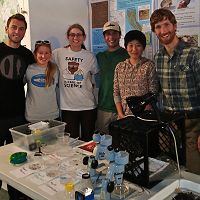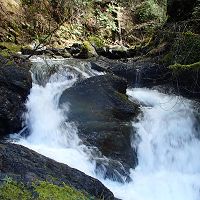Hiromi Uno

I am interested in how aquatic food webs interact with terrestrial food webs. Especially, I am interested in how the behavioral traits of aquatic insects influence these interactions. By carefully tracking the movements, life histories and behaviors of significant aquatic insect species, I investigate how life history or behavioral traits affect nutrient fluxes and predators in both in aquatic and terrestrial systems.
CZO Research Groups
-
CZO Publications
Papers/Books
2020 (In Press)
Combined use of radiocarbon and stable carbon isotopes for the source mixing model in a stream food web. Ishikawa, N.F., Finlay, J.C., Uno, H., Ogawa, N.O., Ohkouchi, N., Tayasu, T., Power, and Power, M.E. (2020): Limnology and Oceanography 1-14
2020
Lifetime eurythermy by seasonally matched thermal performance of developmental stages in an annual aquatic insect. Uno, H. and Stillman, J.H. (2020): Oecologia 192: 647–656
2020
Effect of source habitat spatial heterogeneity and species diversity on the temporal stability of aquatic‐to‐terrestrial subsidy by emerging aquatic insects. Uno, H., and Pneh, S. (2020): Ecological Research 35 (3): 474–481
2015
Anomalomermis ephemerophagis n g, n sp (Nematoda: Mermithidae) parasitic in the mayfly Ephemerella maculata Traver (Ephermeroptera: Ephermerellidae) in California, USA. Poinar, G., Walder, L. and Uno, H. (2015): Systematic Parasitology 90(3): 231-236.
Papers and books that explicitly acknowledge a CZO grant are highlighted in PALE ORANGE.
Other CZO Publications
2016
Spatial and temporal linkage of stream-riparian food webs by seasonal migration of mayfly Ephemerella maculata. Uno, H. (2016): University of California, Berkeley
-
News
-
Events
Eel River Recovery Project's Water Day
Redway, CA.
Explore Further


